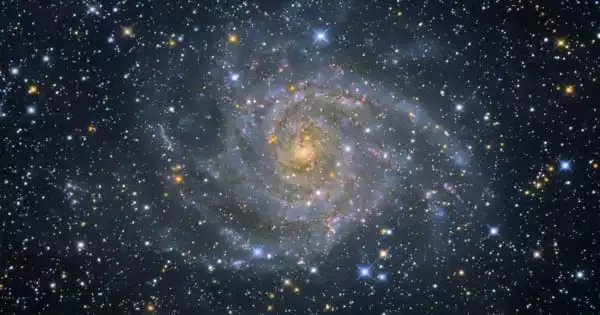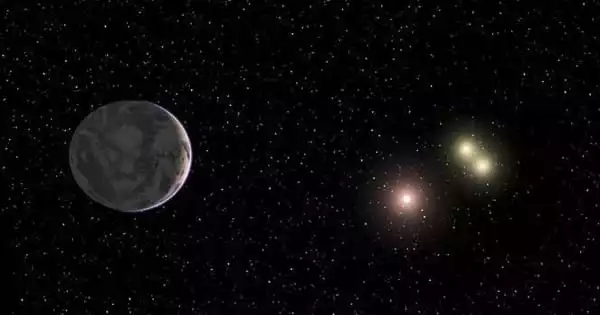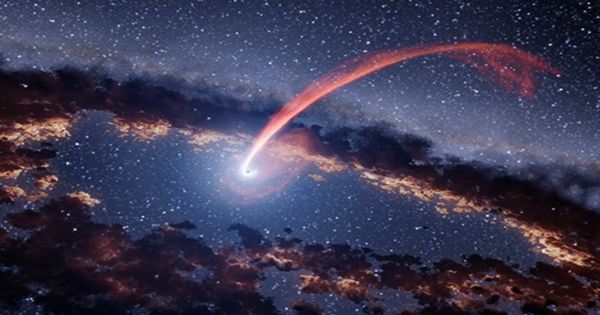Galaxies are also moving apart due to the expansion of the Universe caused by the Big Bang. A galaxy that is part of a collection of galaxies known as a cluster also spins around the cluster’s center of mass. Hubble’s law states that as the universe expands, galaxies get increasingly separated.
Hubble’s law indicates that most galaxies are moving away from one another because the universe as a whole is expanding. Pick any two galaxies at random, and they’re most likely traveling away from each other.
When Edwin Hubble discovered that the cosmos is expanding, he explained it by making an analogy with a fruit cake baking in an oven, according to Western Washington University. As the cake rises, the raisins become more separated. Similarly, as the cosmos expands, the galaxies within it move further apart. The universe, of course, isn’t as easy as a cake, and it required years of painstaking work — both theoretical and observational — to figure out what’s going on.
Even as recently as 1920, scientists like Harlow Shapley thought that the galaxies we see in the sky were much smaller objects on the outskirts of our own galaxy, rather than very distant ones equal in size and structure to the Milky Way.
Typical astronomical spectra show a pattern of emission and absorption lines produced at well-defined wavelengths. However, as the source moves away from us, we see these lines change to the red end of the spectrum, hence the term “redshift.”
According to The Sky At Night Magazine, that year saw a “big dispute” on the subject between Shapley and another astronomer, Heber Curtis, who held a more current viewpoint. However, the outcome of this argument, which took place at the Smithsonian Institution in Washington, D.C., was inconclusive. Observations were simply not excellent enough at the time to establish galactic distances with any certainty.
When Edwin Hubble succeeded in estimating the distance to the Andromeda galaxy in 1924, he broke the deadlock. He accomplished this by studying a type of pulsating star known as a Cepheid variable, which has a strong link between intrinsic luminosity and pulsation frequency.
Knowing the frequency reveals the luminosity, and comparing it to the observed brightness reveals the distance. According to Australia Telescope National Facility, when Hubble did this for Cepheids in the Andromeda galaxy, it became evident that it must be well outside the Milky Way. Hubble’s first finding was this. The second was considerably more significant.
According to APS Physics, Hubble analyzed the “redshift” of other galaxies in addition to determining their distances. According to The European Space Agency, this is a feature of the light spectra emitted by celestial objects caused by a process known as the Doppler shift.

Think of the sound a vehicle makes as it whizzes past you. As it’s approaching the sound is higher pitched, then as it recedes into the distance it’s lower pitched. What happens is that sound waves are bunched up when they’re moving towards you, and stretched out when they’re moving away. It’s the same with light waves, except that we perceive the difference as a change in color instead of pitch.
Typical astronomical spectra show a pattern of emission and absorption lines produced at well-defined wavelengths. However, as the source moves away from us, we see these lines change to the red end of the spectrum, hence the term “redshift.”
Measuring the magnitude of this shift provides a decent estimate of how quickly the item is moving away from us. According to Western Washington University, Hubble’s significant finding in 1929 was that the redshift of a galaxy is proportionate to its distance – a fact now known as “Hubble’s law.” This was really important for two reasons.
First, it confirmed theoretical predictions made at the same time that the cosmos is constantly expanding. Second, according to NASA’s Starchild Team, it gave scientists a new technique of determining the distance to galaxies that were too far away for the Cepheid approach, simply by measuring their redshift.
The fabric of space itself is referred to when we say “the cosmos is expanding.” According to Scientific American, while this expansion carries all of the material items in the universe with it, they can still interact with one another through the pull of gravity. According to NASA, gravity keeps individual galaxies together, and the same force can also bind numerous galaxies together in galaxy clusters.
According to Astronomy Magazine, the Milky Way is part of a relatively small cluster called the Local Group, which contains roughly 85 gravitationally connected galaxies, the majority of which are quite small. The Andromeda galaxy is the largest and most well-known of them, and it is actually heading towards the Milky Way — in other words, it has a “blueshift” rather than a “redshift.” Eventually, a few billion years from now, the two will collide and merge into a single massive galaxy.
















